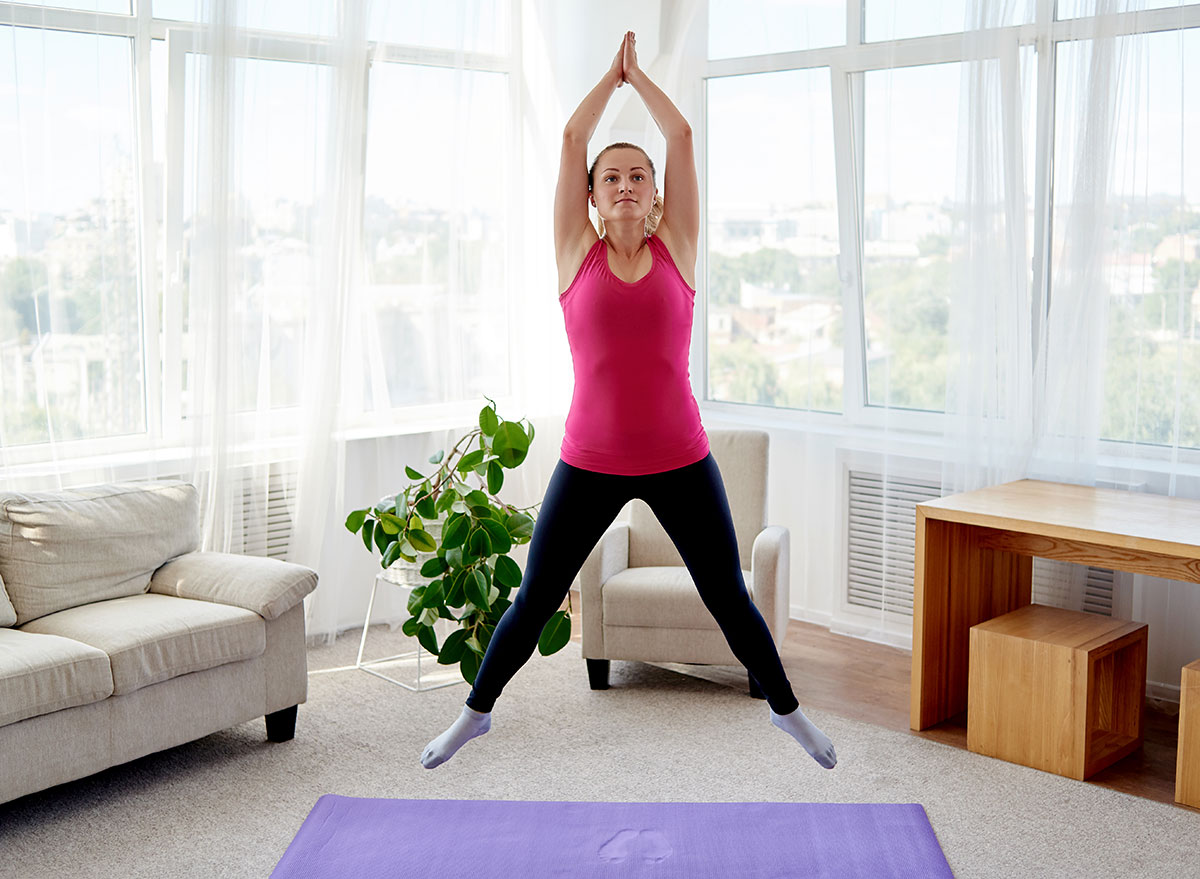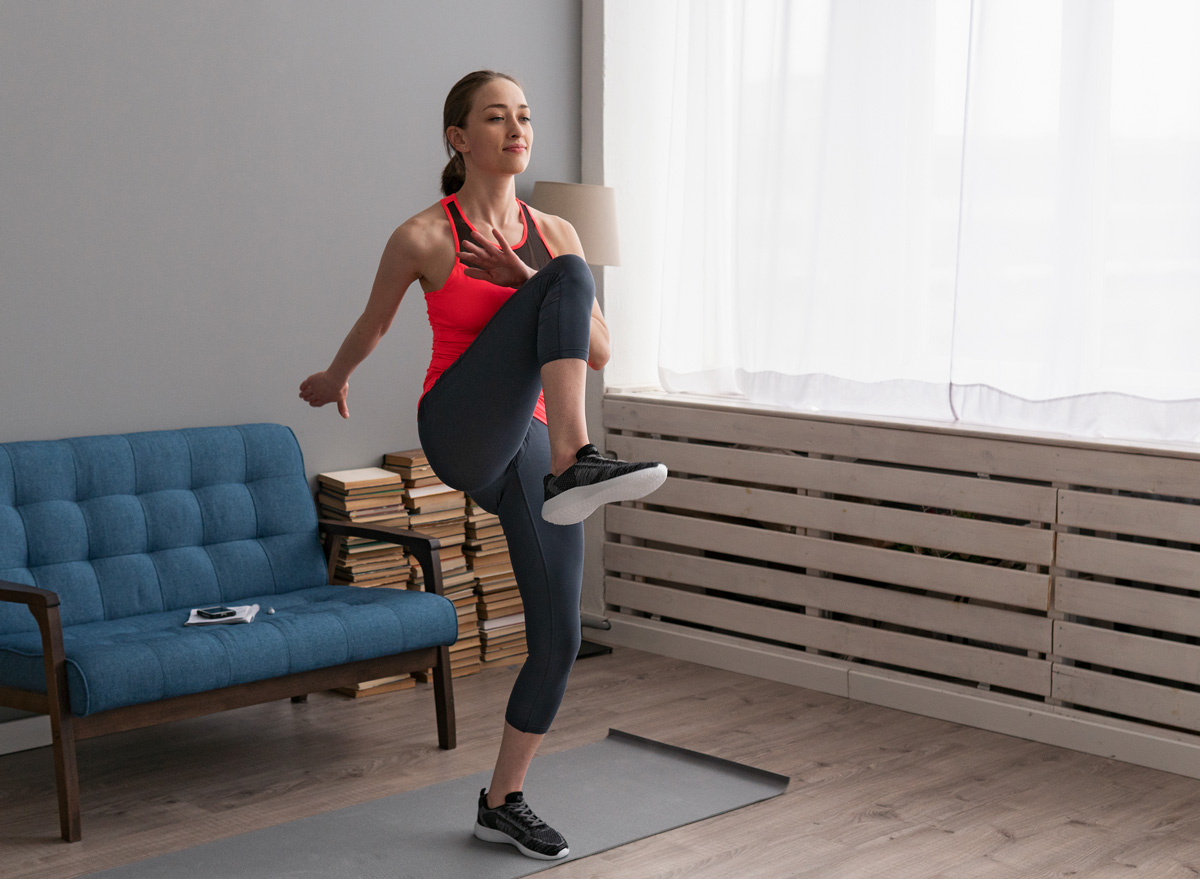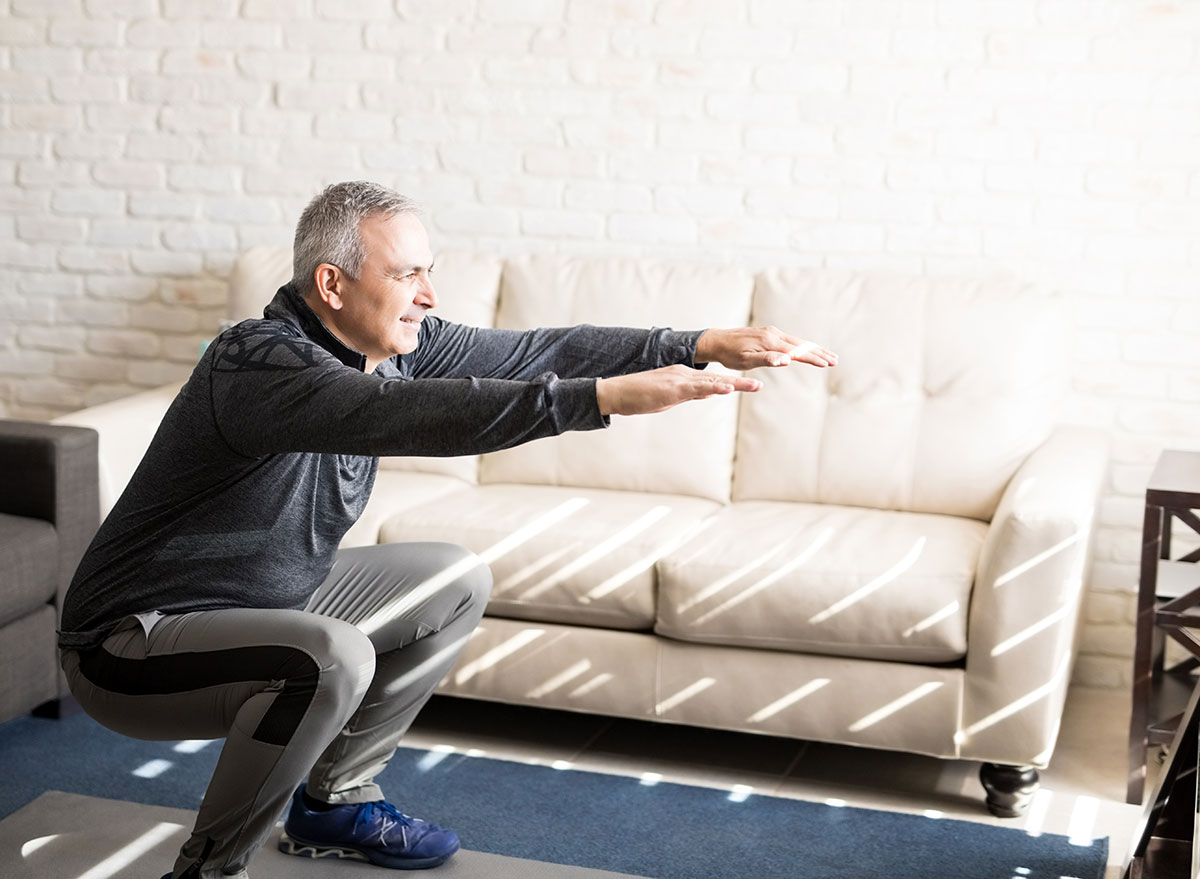This Super-Quick Workout Is Scientifically Proven to Work, Says Mayo Clinic

If you needed any further convincing on the benefits of high-intensity interval training (HIIT)—or short bursts of intense exercise broken up by brief moments of rest—some of the biggest names in health and fitness joined forces to release a study proving that a simple and quick, five-move workout routine can indeed work wonders for your body.
The names attached to the study, published last month in the International Journal of Exercise Science, include some of the most prominent figures in the field: Martin Gibala, Ph.D., professor of kinesiology at Canada's McMaster University, author of The One-Minute Workout, and perhaps the world's top expert on the science of interval training, and Michael Joyner, MD, a physiologist, anesthesiologist, and world-renowned expert in human performance at the Mayo Clinic.
According to their study, doing one simple bodyweight routine that lasts 11 minutes and features five key exercises—all "requiring minimal time commitment and no specialized equipment"—can "enhance cardiorespiratory fitness in inactive adults."
The findings weren't a surprise, but they underscore what proponents of interval training have been saying for years: It's entirely possible to fit worthwhile, ultra-short workouts that have a major impact on overall health and aerobic fitness into a busy lifestyle. "These findings have relevance for individuals seeking practical, time-efficient approaches to exercise," the authors write.
As far as the workout goes, the study adapted The 5BX plan, an old routine developed for the Royal Canadian Air Force in the 1950s, which stands for "Five Basic Exercises." These include burpees, high knees, split squat jumps, high knees, and squat jumps. Focusing on 20 young people who were all considered healthy but out of shape, the researchers split the subjects into one group that completed the exercises three times-per-week for 11 minutes at a time, and a control group, which did not exercise. At the end of the six-week study, the participants who exercised (no shocker here) improved their cardiovascular fitness by seven percent, while those who didn't do the routine did not.
If you're curious to sample the same routine that the study participants performed, see below for the complete workout. And if doing intervals sounds too intense for you, then make sure you're aware of The One Major Side Effect of Walking Every Day, According to Science.
Warmup

Perform jumping jacks for one minute.
Burpees

Perform burpees for one minute, though do not do the push-up portion of the burpee. Here's a video tutorial.
Walk in Place

Walk in place for one minute. Yes, that's it.
High Knees

Perform high knees in place for one minute by raising each knee up to your chest as fast as you can (while remaining standing with your back straight).
Walk in Place

Walk in place for one minute.
Split Squat Jumps

Perform split squat jumps for one minute. For this exercise, get into a lunge position, then jump up high in the air to switch your legs. Keep jumping and alternating your legs for the full 60 seconds. See here for a video.
Walk in Place

Walk in place for one minute.
High Knees

Perform high knees in place again for one minute.
Squat Jumps

Perform squat jumps for a minute. For this exercise, you'll do a standard squat, but as you rise, explode and jump into the air as high as you can, with both hands held high. Here's a video tutorial.
Cool Down

Walk in place for one minute. And for more great workout routines, don't miss our great collection of 30 Workouts You Can Do in Practically No Time at All!







